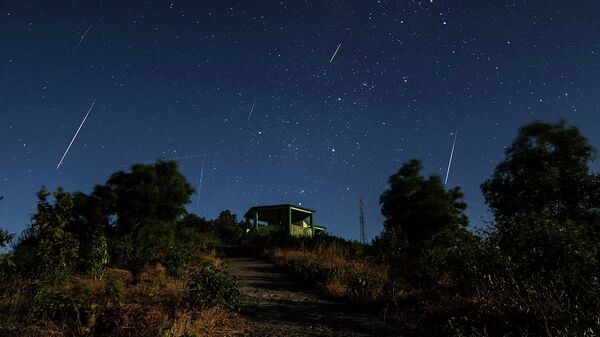The Lyrid meteor shower, on display from April 16 to 25, will peak in the early morning of April 22, just a few hours before dawn.
Visible from within the celestial formation known as the Summer Triangle, the Lyrids' rate can average up to 18 per minute (although a fickle universe offers no guarantees), all appearing to come from one position, or "radiant," in the night sky.
Originating from the 461-year solar orbit of Comet Thatcher, which was first identified in 1861, the Lyrids will occur this year under a small, waning moon, allowing for excellent visibility, if clouds don't get in the way.
You can see the meteor shower by finding the easily identifiable Summer Triangle, made up of three prominent stars: Deneb, in the constellation Cygnus; Altair, in the constellation Aquila; and Vega, in the constellation Lyra.
The Lyrid meteors are the result of Earth passing through Thatcher's dusty tail. The comet is not expected to reappear in our vicinity until around 2280.
As tiny chunks ejected from the comet enter the Earth's atmosphere — at some 100,000 mph — they are quickly burned up, resulting in a glorious show of shooting stars. If a particularly dense clump of material enters Earth's atmosphere, a "rain" of meteors can be seen. There have been occasional documented sightings of more than 100 bright streaks per minute speeding through the night sky.





